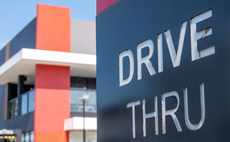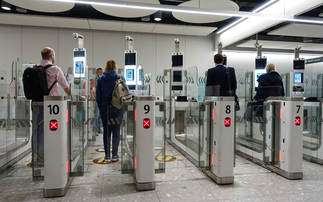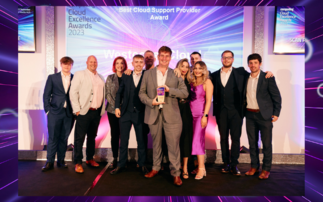As the big cloud providers roll out bare metal services and open-source projects spring up we look at the drivers
Bare metal clouds are not new. The idea of provisioning and orchestrating hardware via an API goes back a long time, and in 2010, SoftLayer unveiled a commercial bare metal cloud offering. However, it has taken a while for bare metal cloud to edge anywhere near to the mainstream. Indeed, its use cases are still fairly niche, uptake being most enthusiastic so far in large organisations with very heavy data demands (CERN is a big user for example). But the market for the capabilities offered by bare metal is growing rapidly as organisations seek to move hard-to-virtualise applications out of their data centres while others adopt real-time analytics, machine learning, and high-performance computing.
The big beasts in bare metal world are IBM, which acquired SoftLayer in 2013 and made it the basis of its IBM Cloud, Oracle which announced its bare metal cloud in 2016, and Rackspace one of the prime movers of the OpenStack platform. Last year they were joined first by Alibaba Cloud with its ECS Bare Metal, with AWS following suit.
All of these vendors offer hosted pay-as-you-go bare metal instances as an alternative to virtual machines (VMs) or dedicated servers. They come at a similar price to VMs too, so for once cost is not an impediment; rather, it's to do with complexity. Historically bare metal clouds have been tricky to set up, configure and manage, and if you don't need that ultralow latency, why bother?
But these difficulties are being overcome at the same time as potential use cases for the technology are increasing, which is why we are starting to hear more about bare metal cloud these days.
What is bare metal cloud?
Virtualised cloud infrastructure is provisioned, managed and automated via an API. Bare metal clouds have no virtualisation software or operating systems, but the idea is exactly the same.
The lack of a hypervisor means that multitenancy is no longer an option, but there are gains to be had in terms of performance. Oracle boasts its hosted bare metal servers are up to five times faster than similarly specified virtual machines under certain workloads, a claim that's supported by some reviews. (This performance boost is not just down to the lack of virtualisation though: bare metal instances from cloud vendors often come with high-end NVMe local storage attached).
It is easier to customise bare metal servers than VMs, as the machine's CPU, memory and storage are not obscured by virtualisation layers. And because they are single tenancy, ‘noisy neighbour' problems caused by surges in demand from other VMs sharing the same server do not occur, the benefits being better security and more consistent performance.
Bare metal instances are available on a pay-as-you-go basis, generally charged by the hour, whereas a dedicated hosted server contract is typically counted in months. Standard instances can be spun up in a few minutes, whereas customised servers will likely take a couple of hours to configure.
Bare metal clouds can be set up in private data centres too. This used to be a difficult job, but the task has been simplified by the arrival of software such as Ironic. Derived from OpenStack Nova, Ironic can be used independently of that platform to co-opt individual servers into a cloud. According to project team lead and engineer Julia Kreger it "makes physical machines look like VMs". Incidentally, Rackspace uses Ironic to deliver its bare metal cloud services.
What's driving the interest in bare metal cloud?
Why are we starting to hear more about bare metal now? In part, it's the maturity curve, with more understanding of the issues and increasing numbers of providers and projects offering viable solutions, including big players like IBM and Oracle and also OpenStack. There are more concrete use cases too.
The drive to move on-premises enterprise applications out of the data centre
One of the reasons that IBM and Oracle have been keen to develop bare metal capabilities is that it solves many problems that customers have with moving enterprise apps to a public cloud.
More high-performance computing and data-intensive workloads
CERN is a major user of Ironic and other scientific organisations are picking up on bare metal too, said Red Hat director, product marketing, cloud Infrastructure Chuck Dubuque, who referenced a customer involved in weather simulations.
"All we need is the MAC addresses of their machines and we can run bare metal as a service," said Dubuque. "Then they can stick anything there they want."
Red Hat's new Ironic-based bare metal offering, Metal Kubed, runs on Kubernetes and is managed through Kubernetes interfaces.
Machine learning and big data analytics
Data scientists favour GPUs and FPGAs (Field Programmable Gate Arrays) for real-time, low-latency, data-intensive analytics, but these devices are difficult to virtualise. Bare metal clouds allow such hardware to be pooled and provisioned automatically and to provide consistent performance.
"Those guys need real-time results but they also want the manageability of those resources," said Alan Clark, CTO of SUSE and chair of the OpenStack Foundation. "They were doing bare metal before but were not able to take full advantage of those resources and putting them into the cloud gives you that capability."
The rise of containers
For today's cutting-edge developer, fashion dictates that applications be written as microservices and that those microservices be housed in containers. Optionally those containers can also be orchestrated by Kubernetes. Either way, containers run happily in bare metal clouds with no need for heavyweight VMs. Box is one company that runs Kubernetes on a bare metal cloud.
Ready for the enterprise?
While bare metal cloud has matured to the point that its readily available as a service from major cloud vendors particularly for rehoming enterprise apps, standards, usability and interoperability of are still lacking compared with more familiar virtualised services. However, it's surely just a matter of time before bare metal clouds come rolling down from the likes of CERN, Box, eBay and Verizon to more everyday organisations.
A longer version of this article which includes a look at bare metal vendors, open-source projects and solution providers is available as part of Computing's market intelligence service, Delta.
Delta is a new market intelligence service from Computing to help CIOs and other IT decision makers make smarter purchasing decisions - decisions informed by the knowledge and experience of other CIOs and IT decision makers.
Delta is free from vendor sponsorship or influence of any kind, and is guided by a steering committee of well-known CIOs, such as Charles Ewen, Christina Scott, Steve Capper and Laura Meyer.
Ten crucial technology areas are already covered at launch, with more data appearing and more areas being covered every week. Sign-up here for your free trial of the Computing Delta website.






















